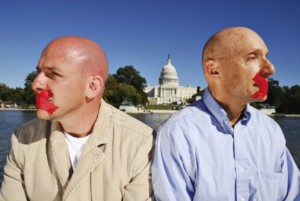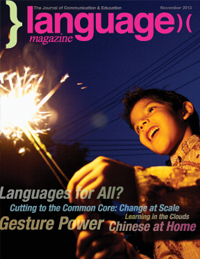 Yet another study has confirmed the positive benefits of multilingualism on the brain but this is the first to show that the protective effects of bilingualism extend to people who are illiterate.
Yet another study has confirmed the positive benefits of multilingualism on the brain but this is the first to show that the protective effects of bilingualism extend to people who are illiterate.
According to the study published in the journal Neurology, people who speak two languages may be able to ward off dementia for years, regardless of whether they have the ability to read or not,
Researchers looked at a population of 648 people in India with an average age of 66, all of whom had been diagnosed with some form of dementia. They found that those who spoke two languages developed dementia almost five years later than those who spoke just one language.
The bilingual advantage extended to illiterate people who had not attended school. This confirms that the observed effect is not caused by differences in formal education.
It is the largest study so far to gauge the impact of bilingualism on the onset of dementia – independent of a person’s education, gender, occupation, and whether they live in a city or in the country, all of which have been examined as potential factors influencing the onset of dementia.
“Our study is the first to report an advantage of speaking two languages in people who are unable to read,” said study author Suvarna Alladi, with Nizam’s Institute of Medical Sciences in Hyderabad, India.
This suggests “that a person’s level of education is not a sufficient explanation for this difference,” she said.
“Speaking more than one language is thought to lead to better development of the areas of the brain that handle executive functions and attention tasks, which may help protect from the onset of dementia.”
The researchers suggest that bilingual switching between different sounds, words, concepts, grammatical structures and social norms constitutes a form of natural brain training, likely to be more effective than any artificial brain training program.
However, studies of bilingualism are complicated by the fact that bilingual populations are often ethnically and culturally different from monolingual societies. India offers in this respect a unique opportunity for research. In places like Hyderabad, bilingualism is part of everyday life: knowledge of several languages is the norm and monolingualism an exception.
“These findings suggest that bilingualism might have a stronger influence on dementia that any currently available drugs. This makes the study of the relationship between bilingualism and cognition one of our highest priorities,” concluded Thomas Bak of the School of Philosophy, Psychology and Language Sciences at Scotland’s University of Edinburgh.
The study, published in Neurology, the medical journal of the American Academy of Neurology, was supported by the Indian Department of Science and Technology and by the Centre for Cognitive Aging and Cognitive Epidemiology (CCACE) at the University of Edinburgh









